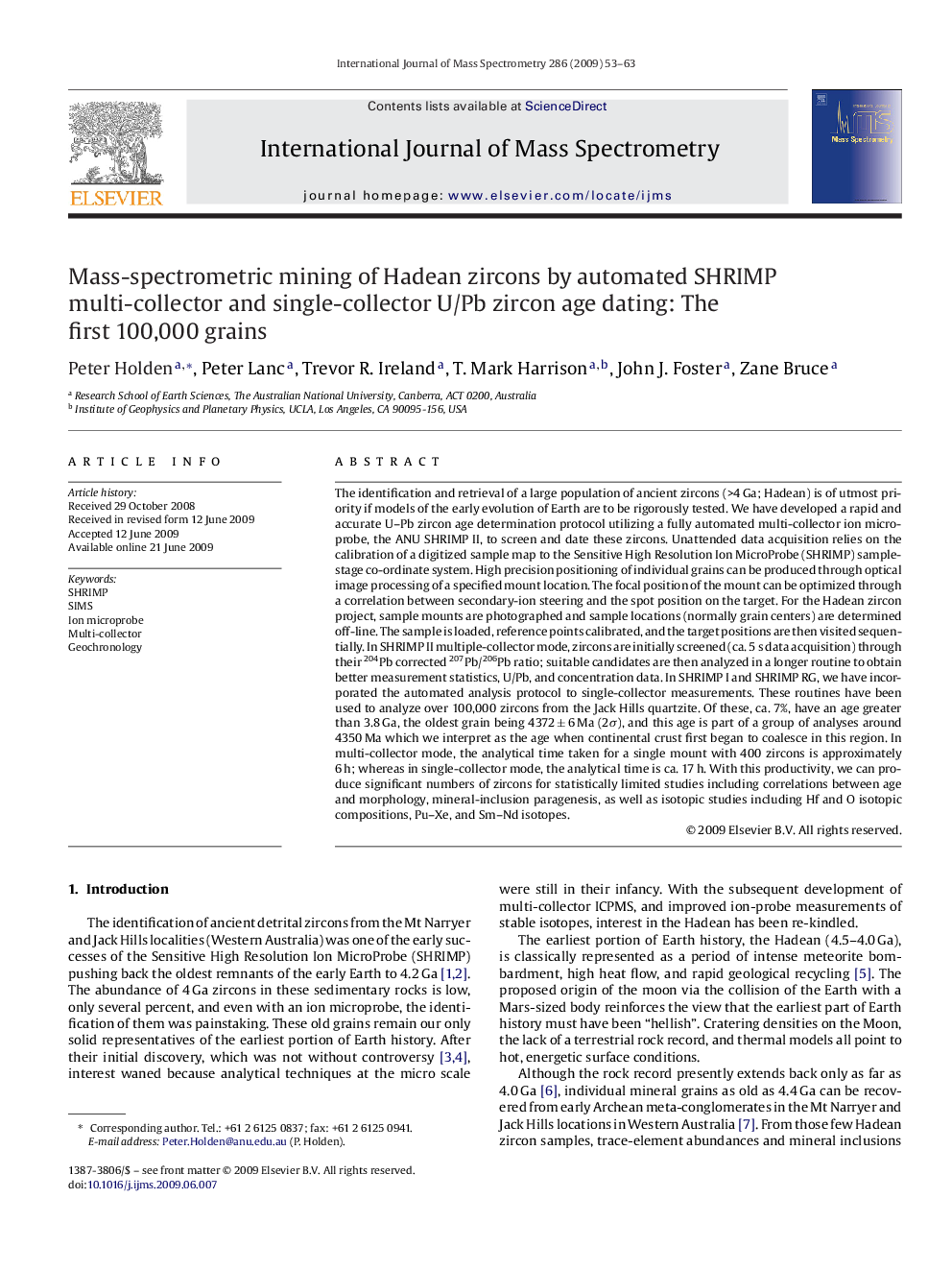| Article ID | Journal | Published Year | Pages | File Type |
|---|---|---|---|---|
| 1194602 | International Journal of Mass Spectrometry | 2009 | 11 Pages |
The identification and retrieval of a large population of ancient zircons (>4 Ga; Hadean) is of utmost priority if models of the early evolution of Earth are to be rigorously tested. We have developed a rapid and accurate U–Pb zircon age determination protocol utilizing a fully automated multi-collector ion microprobe, the ANU SHRIMP II, to screen and date these zircons. Unattended data acquisition relies on the calibration of a digitized sample map to the Sensitive High Resolution Ion MicroProbe (SHRIMP) sample-stage co-ordinate system. High precision positioning of individual grains can be produced through optical image processing of a specified mount location. The focal position of the mount can be optimized through a correlation between secondary-ion steering and the spot position on the target. For the Hadean zircon project, sample mounts are photographed and sample locations (normally grain centers) are determined off-line. The sample is loaded, reference points calibrated, and the target positions are then visited sequentially. In SHRIMP II multiple-collector mode, zircons are initially screened (ca. 5 s data acquisition) through their 204Pb corrected 207Pb/206Pb ratio; suitable candidates are then analyzed in a longer routine to obtain better measurement statistics, U/Pb, and concentration data. In SHRIMP I and SHRIMP RG, we have incorporated the automated analysis protocol to single-collector measurements. These routines have been used to analyze over 100,000 zircons from the Jack Hills quartzite. Of these, ca. 7%, have an age greater than 3.8 Ga, the oldest grain being 4372 ± 6 Ma (2σ), and this age is part of a group of analyses around 4350 Ma which we interpret as the age when continental crust first began to coalesce in this region. In multi-collector mode, the analytical time taken for a single mount with 400 zircons is approximately 6 h; whereas in single-collector mode, the analytical time is ca. 17 h. With this productivity, we can produce significant numbers of zircons for statistically limited studies including correlations between age and morphology, mineral-inclusion paragenesis, as well as isotopic studies including Hf and O isotopic compositions, Pu–Xe, and Sm–Nd isotopes.
Graphical abstractThe identification and retrieval of a large population of ancient zircons (>4 Ga; Hadean) is of utmost priority if models of the early evolution of Earth are to be rigorously tested. We have developed a rapid and accurate U–Pb zircon age determination protocol utilizing a fully automated multi-collector ion microprobe, the ANU SHRIMP II, to screen and date these zircons.Figure optionsDownload full-size imageDownload as PowerPoint slide
